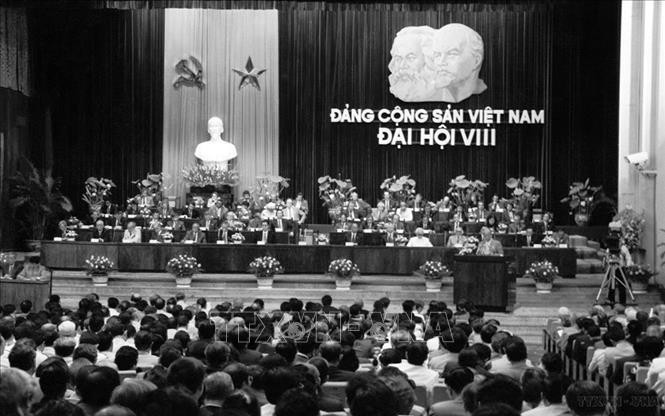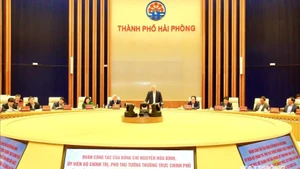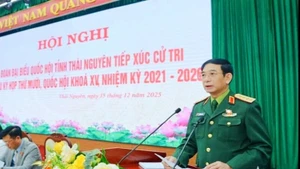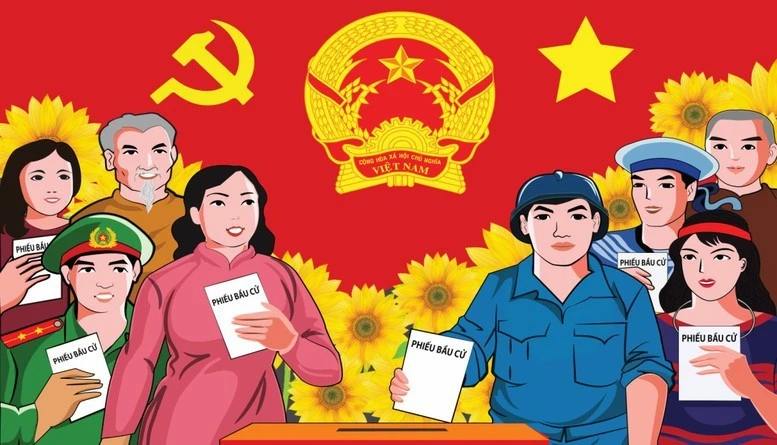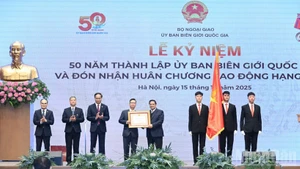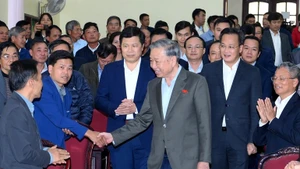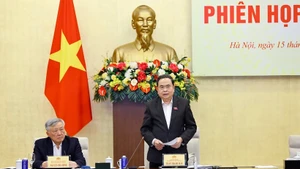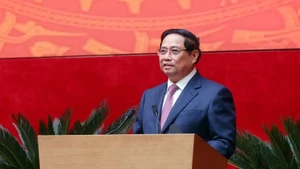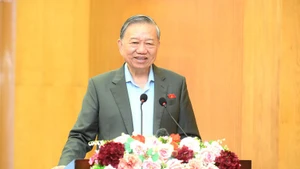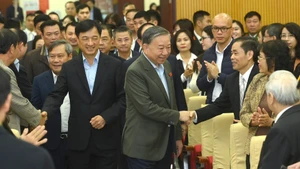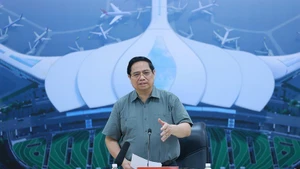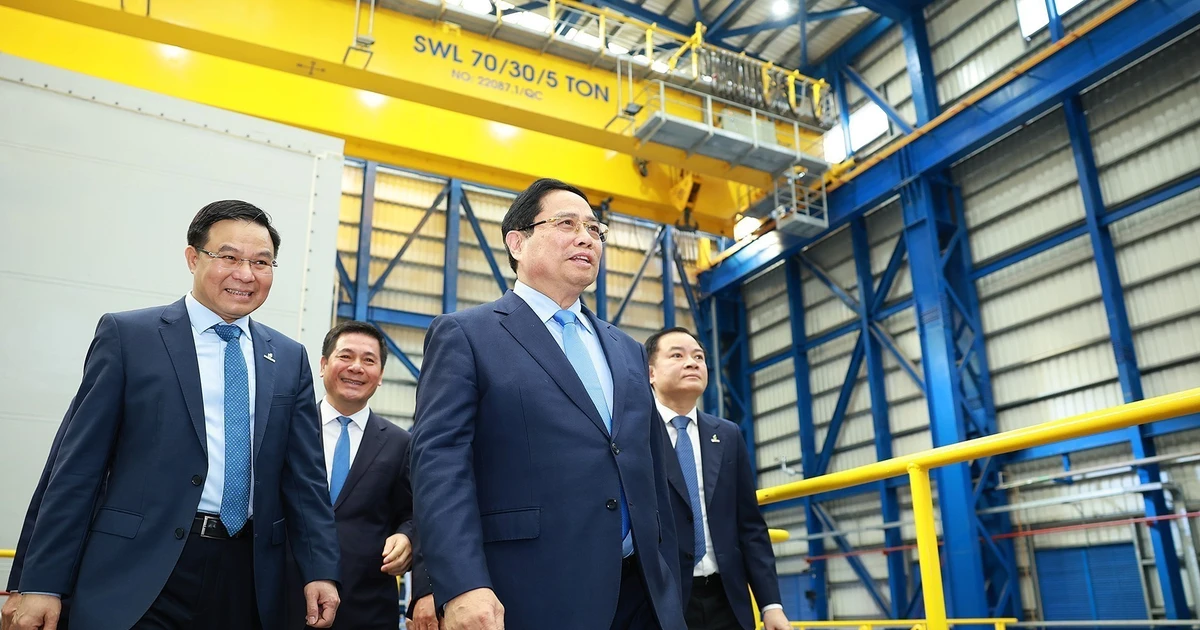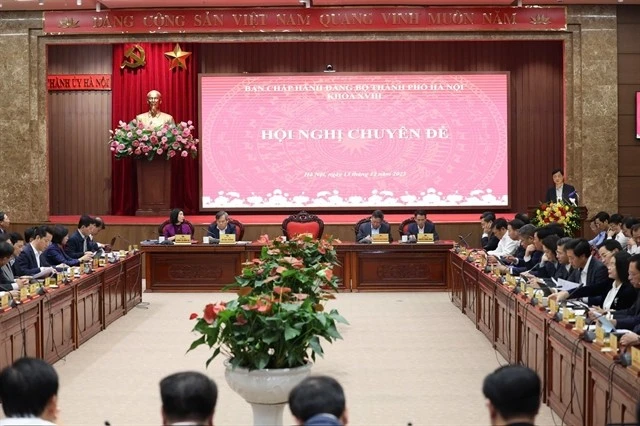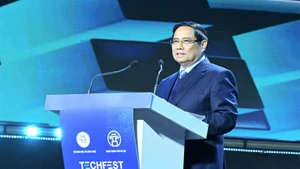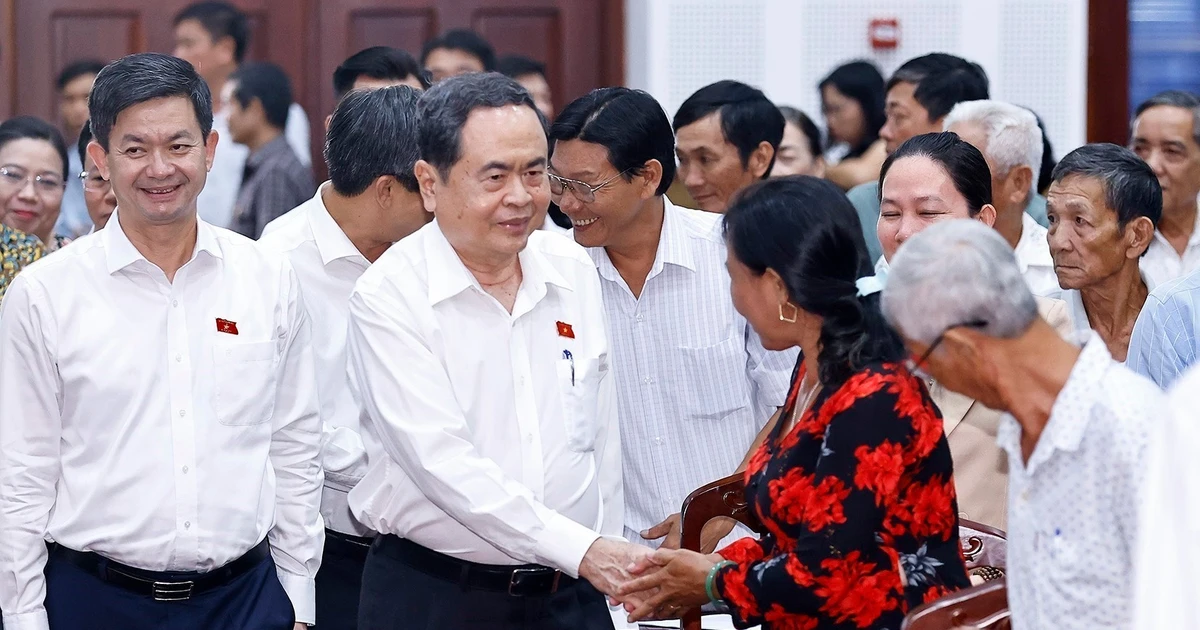General Secretary of Communist Party of Viet Nam: Do Muoi (February 2, 1917 –October 1, 2018)
General Secretary of Communist Party of Viet Nam: Le Kha Phieu (December 27, 1931 –August 7, 2020)
The congress assessed that the ten-year Doi Moi (renewal) process had achieved great results of important significance. The tasks set by the 7th National Party Congress for the 1991–1995 period were basically completed. The country had overcome the socio-economic crisis, although certain aspects remained unstable. The objectives set for the initial phase of the transitional period — laying the foundations for industrialisation — had been fundamentally fulfilled, allowing the country to enter a new stage of promoting national industrialisation and modernisation. The path towards socialism in Viet Nam had become increasingly clear. Overall, the formulation and implementation of the renewal guidelines in recent years were fundamentally correct and aligned with socialist orientations, though there had been certain shortcomings and prolonged deviations, leading to partial deviations in some fields, to one degree or another.
After reviewing ten years of renewal, the congress drew six key lessons: Upholding the goals of national independence and socialism throughout the renewal process; firmly grasping the two strategic tasks of national construction and defence while persevering with Marxism–Leninism and Ho Chi Minh’s Thought; closely combining economic renewal with political renewal from the beginning; building a multi-sector commodity economy operating under market mechanisms while strengthening the state’s management role under socialist orientation; expanding and consolidating great national unity, promoting the strength of the entire nation; expanding international cooperation while seeking sympathy, support and assistance from the world’s peoples, combining national strength with the strength of the times; strengthening the Party’s leadership role and regarding Party building as a key task.
The congress reaffirmed the continuation of the two strategic tasks: building socialism and defending the Fatherland, and promoting national industrialisation and modernisation.
The congress set the goal of striving to make Viet Nam basically an industrialised country by 2020.
The congress adopted the Party Charter (supplemented and amended).
The congress elected the Party Central Committee consisting of 170 members. The Party Central Committee elected the Politburo comprising 19 members, including a Politburo Standing Committee of five members.
Comrade Do Muoi was elected as Party General Secretary, while
Comrades Nguyen Van Linh, Pham Van Dong, and Vo Chi Cong served as Advisors to the Party Central Committee.
At the 4th Plenum of the 8th Party Central Committee held from December 22 to 29, 1997, the Party Central Committee accepted Party General Secretary Do Muoi’s proposal to transfer the position of Party General Secretary, and elected Comrade Le Kha Phieu as Party General Secretary.
Comrades Do Muoi, Le Duc Anh and Vo Van Kiet were assigned as Advisors to the Party Central Committee.
At the 6th Plenum (2nd session) of the 8th Party Central Committee, Resolution No. 10-NQ/TW, dated February 22, 1999, was issued on several fundamental and urgent issues in Party building at the time. A campaign on Party building and rectification was launched, focusing on self-criticism and criticism within all Party Executive Committees, Party organisations and key officials from the central to the grassroots levels.
(Compiled from the Complete Collection of Party Documents; Nhan Dan Newspaper; https://tulieuvankien.dangcongsan.vn)
GENERAL CONTEXT
July 1995: Viet Nam normalised relations with the United States and joined the Association of Southeast Asian Nations (ASEAN).
June 28 –July 1, 1996: The 8th National Party Congress defined the orientation of promoting national industrialisation and modernisation.
1997–1998: Viet Nam overcame the Asian financial crisis with positive growth.
February 22, 1999: The 6th Plenum adopted a resolution on Party building and rectification.
2000: GDP per capita reached 402 USD, doubling the figure from 1990.
DOMESTIC SITUATION
After ten years of comprehensive renewal guideline, the country achieved outstanding progress in many areas. The material living standards of most people improved, democracy was enhanced, and public confidence in the regime, the nation’s future, the Party, and the State was strengthened.
Viet Nam had overcome the socio-economic crisis, though certain aspects remained unstable.
Objectives for 1996–2000:
GDP growth of 9–10% per year; industrial growth of 14–15%; agricultural growth of 4.5–5%; exports to increase by 28%.
By 2000: agriculture to account for 19–20% of GDP, industry 34–35%, and services 45–46%.
Party building and rectification: A campaign of self-criticism and criticism was conducted within all Party Executive Committees, Party organisations, and key officials from the central to grassroots levels.
In international relations, Viet Nam achieved remarkable success: normalising relations with the United States (July 1995), joining ASEAN (July 1995), and enhancing its position on the international stage.
INTERNATIONAL SITUATION
The collapse of socialism in the Soviet Union and Eastern European countries caused socialism to experience a temporary decline, yet this did not change the nature of the times; humanity remains in the transitional period towards socialism.
The threat of a world destructive war receded, but armed conflicts, local wars, ethnic, racial and religious disputes, the arms race, and acts of intervention, subversion and terrorism continued in many regions.
Scientific and technological revolutions continued to develop to new levels.
The Asia–Pacific region developed dynamically but still contended with factors of potential instability.
Viet Nam normalised relations with the United States (July 1995), joined ASEAN (July 1995), participated in Asia-Pacific Economic Cooperation (APEC) (1998), and elevated its position in the international arena.
